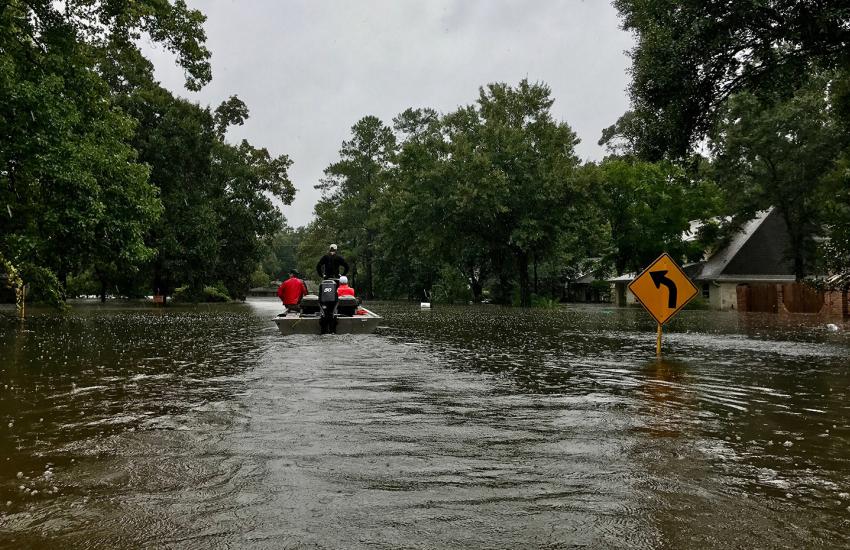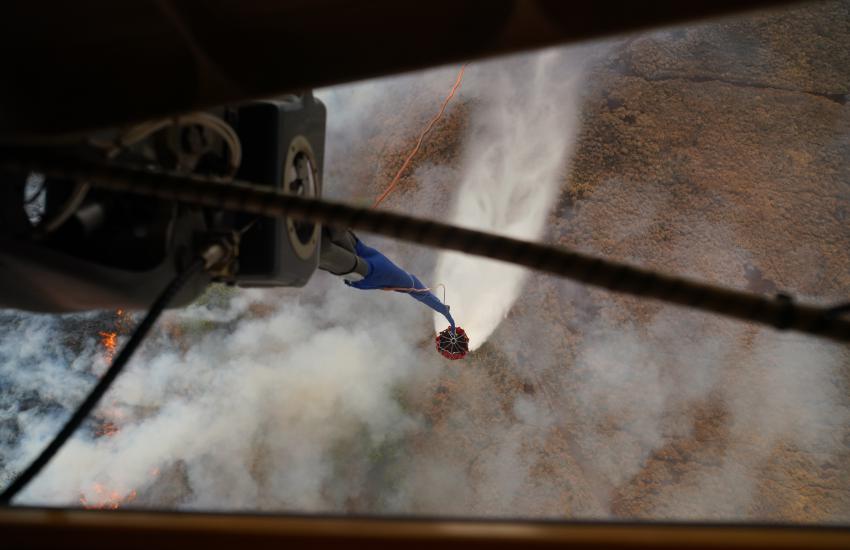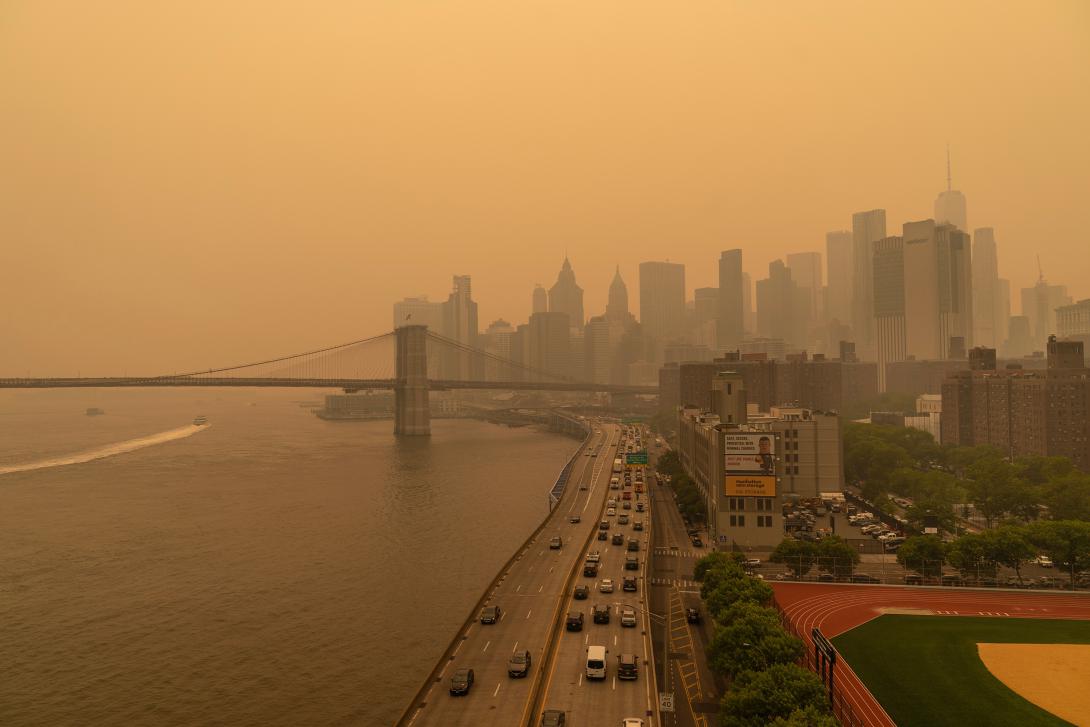Man-made Solutions to a Man-made Problem
Hurricanes, wildfires and floods are exhausting the first responder community and are misplacing people around the globe. Could modern technology—and its innovators—be the superheroes?
To understand the realities of a growing threat, one must recognize its origin.
“Disasters are not natural,” climate expert Mauricio Saldivar firmly stated in an interview with SIGNAL Media.
With a degree in environmental studies, a Ph.D. in geography and more than 20 years of experience as a meteorologist, Saldivar specializes in early warning systems and disaster/risk reduction.
His current roles are director of Early Warning Systems for the city of La Plata in Argentina; general coordinator of Early Warning Systems for Buenos Aires; and consultant for various local Argentinian governments and companies.
“The phenomenon is natural, but the disaster is not,” he clarified. Saldivar was referring to the so-called human-driven warming of the planet, commonly attributed to greenhouse gas emissions released in the making of fossil fuels, such as oil and natural gas, for electricity production.
Certainly, the topic of climate change and global warming is in no way novel. Scientists have shown proof of CO2’s heat-trapping nature—ultimately causing global warming—since the mid-19th century, according to NASA.
For the United States, such findings ignited the passage of the Clean Air Act, first introduced as the Air Pollution Control Act of 1955, later progressing into the Clean Air Act of 1970 to control toxic pollutants, establish permit program requirements, phase out the use of harmful chemicals for the ozone layer and more.
Now, the implementation and popularity of “green” innovations such as wind turbines, solar power panels and electric vehicles continues to grow.
A little over a year ago, President Biden signed the Inflation Reduction Act into law, investing in green energy and incentivizing federal government and industry members to embark on a cleaner journey.
Similar mandates worldwide have bolstered electric vehicle sales, causing the International Energy Agency to predict a 60% average share of electric cars in total sales in China, the European Union and the United States by 2030. Green initiatives have also driven further research in innovations such as hydrogen-fueled vehicles and the use of artificial intelligence to monitor and analyze emergency disaster zones.
While regulations create change, the Earth continues to warm, according to NASA. And though a nation like the United States has preparedness and response procedures in place, first responders and members of the military struggle to keep up with the overwhelming need for disaster relief.
“We usually had a break,” said Terry Stockholm, a former U.S. Air Force lieutenant colonel in communications and information technology. “You start hurricane season in June, and that runs through November, and then you have a little bit of a break.”
Stockholm formerly served as the deputy chief of Information Technology (IT) Operations and chief of IT Disaster Operations for the Federal Emergency Management Agency (FEMA). Following Hurricane Katrina in August of 2005, Stockholm was tapped by the Department of Homeland Security (DHS) to analyze and evaluate response communications for future preparedness for similar disasters.
From snowstorms to occasional earthquakes, to the winter thaws flooding the Dakotas, to the California fires, FEMA responders used to have an annual routine that included time to reset and prepare for the next response, Stockholm explained. Today, the landscape has shifted, figuratively and literally.
“Now what’s happened is it’s just a constant cycle; it never stops,” he said. “Any personnel, you’ve got to give them breaks.”
Climate change is a big topic of discussion among FEMA members, Stockholm explained. And whatever the agency can do to go green, they absolutely will.
However, in the case of disaster emergencies, responders will use any means necessary to aid those in need. “We’re going to run generators; we’re going to run whatever to get the power up and running to get people back in their homes,” he said.
FEMA recognizes the changing climate as a priority, naming it a force multiplier threatening the well-being of American citizens. “When emergency managers plan for and strategically invest in climate adaptation measures, the effects from disasters are less severe and the road to recovery starts sooner for survivors,” a January fact sheet states.
Thus, risk management and technology implementation come into play.
“You can’t ignore the fact that we have built infrastructure in locations of high risk; in many cases, we can’t relocate that infrastructure,” said David Alexander, senior science adviser on resilience at DHS Science and Technology Directorate (S&T). Alexander also leads the DHS Climate Change Action Group, which was announced by Secretary Alejandro Mayorkas in 2021 to unite department leaders in driving action and addressing the climate crisis.
“We have to seek solutions that can strengthen the resilience of those infrastructures to the forces that they’re going to face,” he continued.

Raised in Aiken, South Carolina, Alexander grew up around a scientist who was part of the notable Manhattan Project alongside Robert Oppenheimer—and knew Albert Einstein. Hearing thrilling science stories from an early age created an obvious trajectory for Alexander, who has a master’s degree in geographic sciences.
“I did my master’s thesis around human influences on streams in the upper piedmont of South Carolina and their adjustment to those influences,” he shared.
Following his time supporting emergency management at the state level, and working with FEMA, Alexander decided to bring his knowledge of physical sciences to some of the more complex emergency management challenges.
“A lot of what we learn from Earth science and geomorphology and geology is how those processes actually work,” he said, speaking on contributing factors to environmental events. “That then helps us identify ... the appropriate technology solutions.”
And technologies will vary based on findings, Alexander explained. “We have some new solutions that look at how do you more effectively model those different types of risk at the local level, and then how do you connect that model to potential interventions or actions that a community planner or infrastructure operator could choose to implement to reduce overall disaster risk for that asset or that location.”
According to the DHS S&T representative, technology development research is underway at Deltares, a laboratory in the Netherlands. Domestic and international partnerships help develop more sophisticated and effective solutions to support the larger infrastructure and community planning stakeholder base, Alexander explained.
“It’s interesting that [the developers of the] technology also chose to pursue an open-source model, so it’s going to be free for use,” he added.
Additionally, DHS S&T is partnering with the Engineer Research and Development Center at the U.S. Army Corps of Engineers, along with several other universities, to explore leveraging new advanced materials to strengthen physical infrastructure, whether it be through retrofit or rebuild, Alexander said.
“We’re looking at new materials, particularly fiber-reinforced polymers, essentially taking local sourced resources and being able to use [them] in a way that we can embed as a construction material in the redesign or upgrade of those infrastructure assets.”
The moat will therefore add elasticity, from the daily wear-and-tear stresses to the heavy precipitation events that could cause serious concerns.
The materials will have also the ability to self-sense. However, not all sensors have to be information-technology-based, Alexander explained.
“What we’re seeing in the advancement of nanotechnology and synthetic biology is that we can actually exploit the physical properties of materials as a way to sense the conditions that those materials are facing,” he said.
Collected information can help with further decision-making, such as enhancing maintenance or prioritizing emergency measures or mitigation actions.
Furthermore, the self-sensing capability allows for self-regulation, meaning that the materials can self-heal, Alexander noted.
Such team effort initiatives with other organizations allow DHS S&T to look at the future of infrastructure from a preparedness standpoint.
From a disaster response perspective, however, the department is working to improve its situational awareness capabilities. “In some cases that involves developing new sensor technologies,” he told SIGNAL Media.
For example, Alexander explained, the National Oceanic and Atmospheric Administration uses title gauges, which are distributed around coastlines and major waterways. The capability helps understand tidal fluctuations and collect data on water quality, and so on.
“So, think of having those types of sensors for wildfire ... those sensors can now give us an early indication of where a wildfire may occur because it’s identifying carcinogenic in the atmosphere that would be reflective of a wildfire incident.”
The sooner a wildfire or any environmental risk is detected, the easier it is to stop.
Still, reducing the carbon footprint is crucial, meteorologist Saldivar stated. It is likely that the 1.5 degrees Celsius threshold for warming will be surpassed within the next 10 years, he told SIGNAL Media.
“We must prepare for a different world,” Saldivar concluded.






Comments